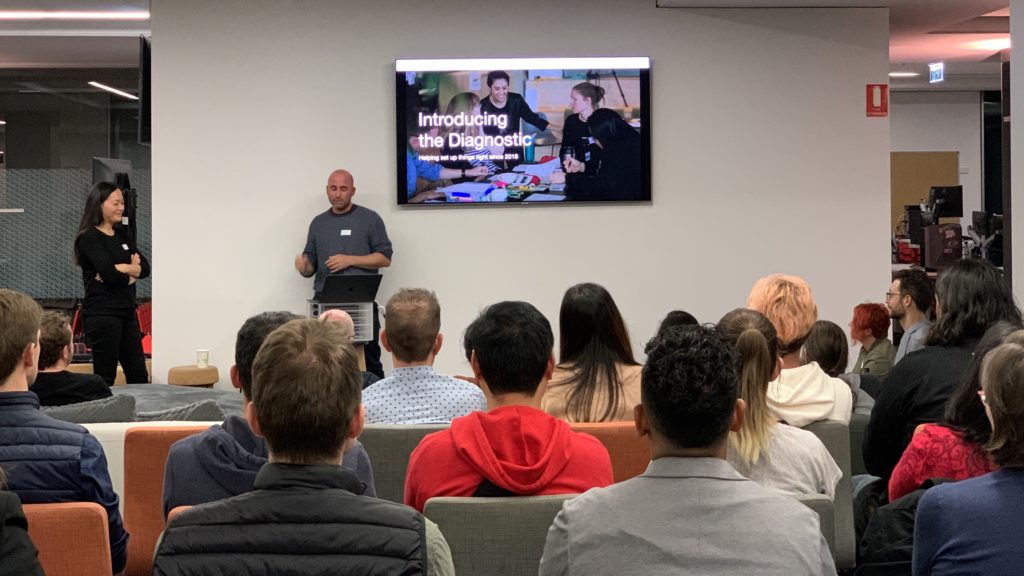Between snap lockdowns and restrictions, we were lucky to be able to sneak in another face to face meetup to talk all things product.
Even with all the various frameworks available, design thinking, lean methodologies and agile practices, product should be a piece of cake, right? Well, we all know that it rarely is. But what about when we add an agency lens on top as well? In April, Jim O’Malley and Su Lim from Isobar Australia shared some of their perspectives from the other side.
Some Common Challenges
- Lack of customer focus: The product team may believe they own the product, but it is vital to remember our customers, because they’re the ones that will use our product. Often the product team may get it, however, sometimes the rest of the organisation may not.
- Fixed solutions: where the team or organisation doesn’t apply an hypothesis-driven approach. Remember, ultimately, until it goes out in the market, we actually don’t know. We’re just guessing.
- Lack of autonomy: Teams are given a bunch of features to build, instead of problems to solve.
- Hippos: Although often well meaning, having the Highest Paid Person’s Opinion (HiPPO) driving the direction, rather than underlying data can be a recipe for disaster. This can also cause a lack of communication or alignment to vision, and tends to drive the wrong focus.
- Data derailers: Whether it is too much, or too little, or even the wrong sort of data. These all have the risk of slowing things down and grinding progress to a halt.
What To Do – an Agency Approach
Although working with an agency comes with a price tag, there are plenty of benefits too. From access to senior leadership, being impartial and baggage free, and disconnected from internal politics.
To help pull this all together, the team at Isobar utilises their Diagnostic session framework, bringing key people (including senior stakeholders) together and co-designing an approach forward through a guided conversation.

01. The Intro
Setting up the context and creating an environment with psychological safety, so that red flags can be raised early. This can be especially important in larger organisations.
02. Past
Undoubtedly, there will be a lot of knowledge and experience already within the teams. But possibly also battle scars. Have an open conversation, and recognise how we got here, and what’s been tried before. Are there any prior learnings or research that can be leveraged?
03. Present
Understand the current state. What are the hurdles and complexities that will need to be addressed? Are there any unknown or unexpected factors that need to be unpacked?
04. Future
Do we agree on the problem and proposition? Can we land on a product vision to guide future decisions?
What is the desired future reality? What would need to change to enable this view? What are the barriers, enablers and quirks which may be unique to the business.
The group may have differing views, but find the common ground to start building a shared mental model and alignment.
05. Wrap
It is important to always end with clear next steps. What is required to move forward, by whom and by when.
Final tips:
- The setup: Be thoughtful of who should attend. Do your research and gather any pertinent information.
- Be flexible: allow the conversation to flow, and don’t be too rigid with the structure of the workshop.
- Collaborative wall-work (brick or digital) to help formulate shared understanding.
- Leverage momentum.
Further reading available at https://isobar.training/anonymous/
Thank you
Thank you again to Jim O’Malley (Head of Strategic Design) and Su Lim (Associate Design Director) for generously sharing some of their experiences, and to our sponsor, the Products and Services team at Isobar Australia for hosting us.
And to our fearless organisers, Jen Leibhart and Liz Blink, and our dedicated volunteers, Gwen D’souza, Nosh Darbari and Steve Bauer.
